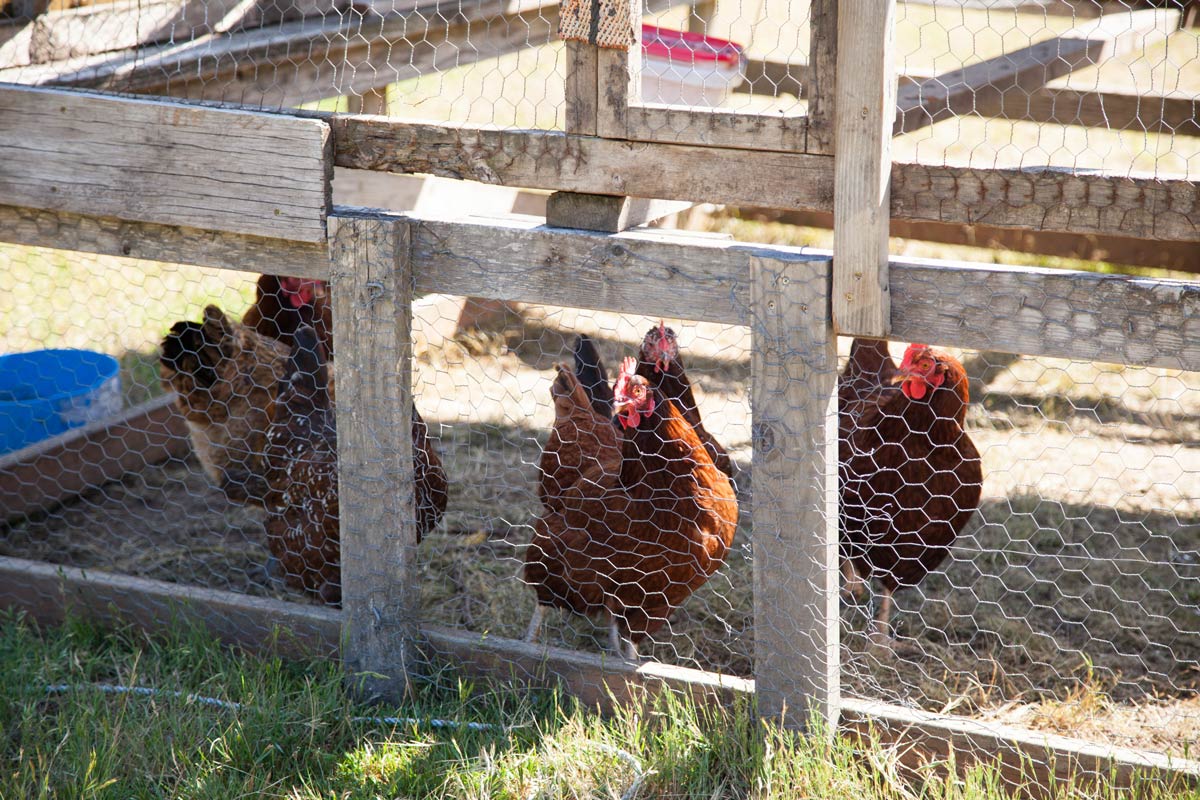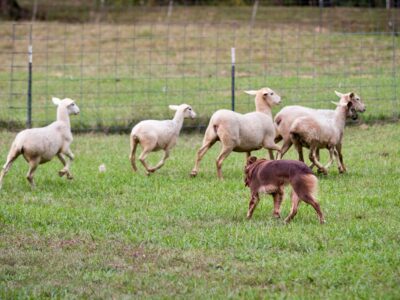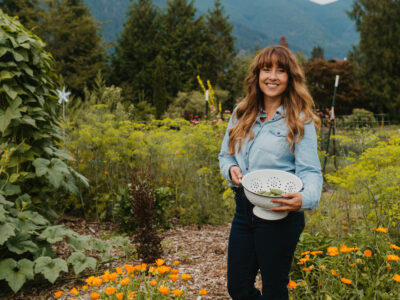Raising farm-fresh eggs with backyard chickens has become quite popular in the last few years. We have been raising backyard chickens on our homestead for years and wouldn’t have it any other way. You can raise backyard chickens and learn the best ways to feed, keep and care for them. From the chicken to the egg and more, learn how!
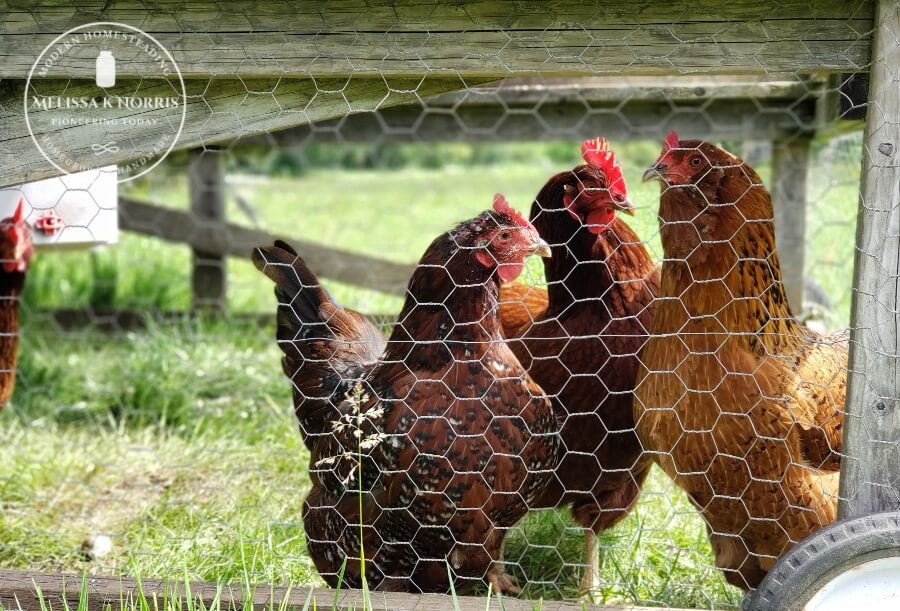
Today is another Pioneering Today Academy member consult (podcast episode #297) where I help one of the Pioneering Today Academy members with a specific question or project that they have.
Note: This post has been updated to include Pioneering Today Podcast Episode #???, “10 Tips on How to Raise Chickens Like the Pioneers” with Lisa Steele from Fresh Eggs Daily.
Table of Contents[Hide][Show]
Why I Love Keeping Backyard Chickens
Raising backyard chickens and collecting eggs is so rewarding whether you live on a homestead or you have a small coop in your urban backyard. These lovely hens will lay eggs that taste so good you’ll never go back to store-bought commercial eggs again.
I love the idea that I control the breeds I want to raise, what they eat, and how they live (free range), providing my family with all the benefits of these delicious birds.
We enjoy raising meat chickens to fill the freezer and backyard layers for storing and preserving eggs; it’s truly pioneer homesteading at its core.
Our family has been raising chicken breeds of all kinds for years, and the learning curve was not too bad. We gathered so much knowledge along the way and now have a pretty good-sized flock, keeping our family well-fed with enough to share with our friends and neighbors.
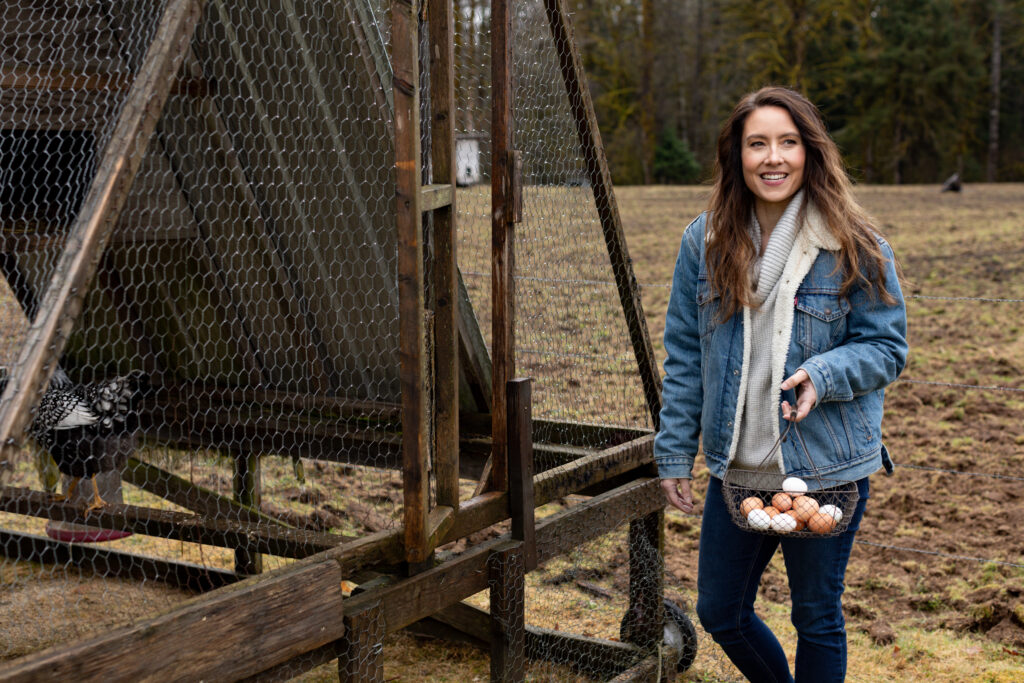
What to Know Before Getting Chickens
Making a plan for livestock before bringing them onto the homestead is always your best practice for success. Here are some considerations to map out when planning for backyard flock of chickens.
Zoning and HOA Restrictions
There’s nothing worse than bringing home a happy little flock only to realize you have to get rid of them. So check for any zoning or HOA restrictions before bringing your new feathered friends home.
- Check in with your zoning to make sure keeping chickens are allowed where you live.
- Check to see if there is a limit to the number of chickens you can keep.
- Check with your HOA to see if keeping chickens will break the HOA terms, etc.
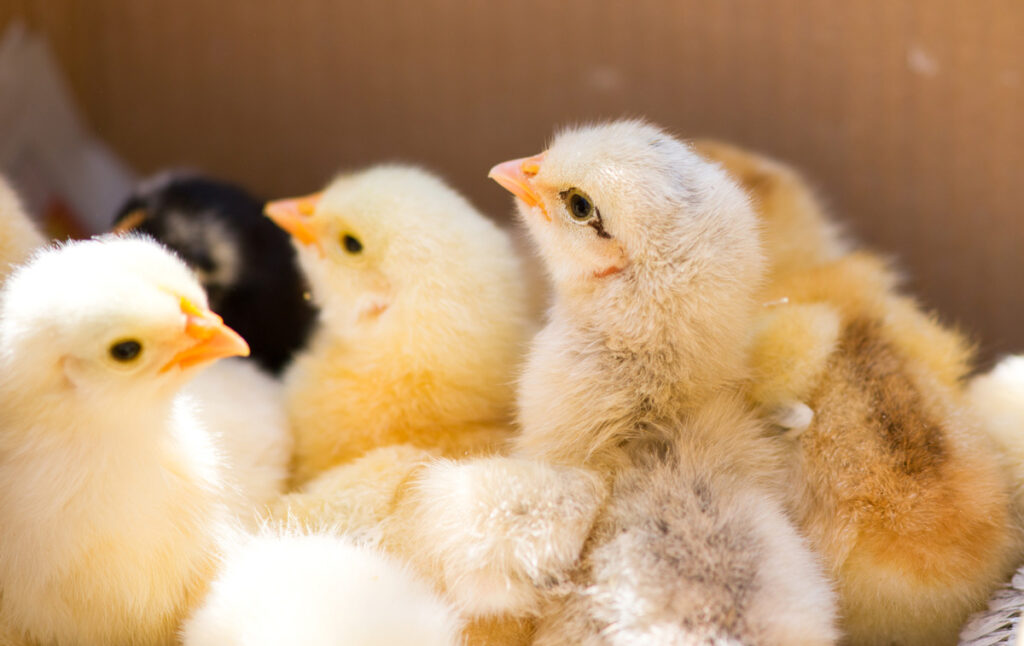
Baby Chicks vs. Adult Chickens
The pros and cons of raising baby chicks or buying adult chickens is a personal choice that can make all the difference when starting out on your chicken adventures no matter where you live. Being prepared with more than feeders and waterers and having some basic information from someone who has done both might help.
- Baby Chicks – They are sooooo cute, but don’t let that fool you into a false sense of happiness. They are fragile and need special care and set up to keep them thriving. How to care for baby chicks for the first six weeks will help with your decision.
- Egg Production – Baby chicks will not lay eggs for four to six months, and take more time and special attention to make it to laying age. As I said, they are delicate, cute little fuzzy balls of fun but fragile and needy.
- Brooding Baby Chicks – At this stage in development, baby chicks require a warm, secure location to keep them safe. It doesn’t have to be a large coop, but it does need to be clean, safe and separate from adult chickens if you have them.
- Chicks are Cheaper – Buying a flock of baby chicks is cheaper than buying adult chickens. The possibility of losing a couple to natural causes or predators isn’t as hard on the pocketbook when you purchase chicks rather than adult hens and roosters.
- Mail Order Chicks – When you order chicks online, you run the risk of getting too many roosters and not enough hens, which can be tough on your hens over time. The benefit of mail order is to know exactly what breed you want and order the size flock for your family’s needs.
- Adult Chickens – When purchasing year-old chickens you’ll be getting eggs right off the bat. You won’t spend time and money caring for, feeding, and maintaining your flock for 4-6 months before they start producing eggs.
- Purchasing Adult Layers – Contact a local farm and ask to buy 3 or 4 of their one-year-old layers. Most farms selling eggs must dispatch those hens because they can’t keep laying at a production level. But for your needs? They’ll be perfect.
- Adult Chicken Needs – Free ranging, coops and runs should be ready to use when you bring in adult chickens. They’ll adapt and are mature enough to know the ropes. Breeding chickens naturally will increase your flock over time and allow you to prepare what’s needed for integrating new chickens into your existing flocks.
Pro-Tip – Don’t be tempted to buy baby chicks and one-year-old chickens at the same time. I would personally go one way or the other; otherwise, you’ll need to raise them separately in your outdoor space to avoid the adult chickens hurting the babies until they’re old enough to thrive.
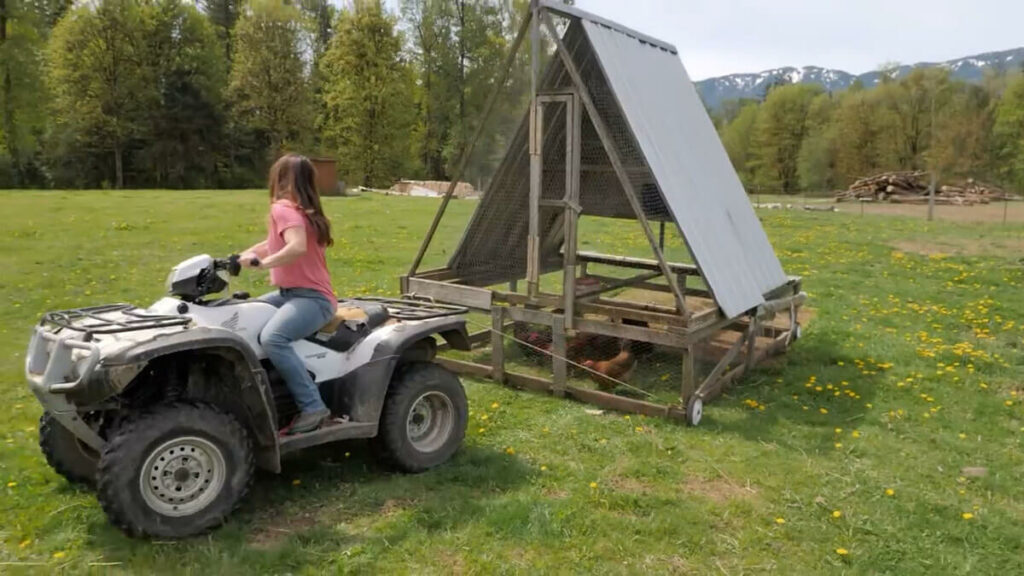
Flock Size
The number of backyard chickens will be different for each person and family. My basic rule of thumb is to estimate for natural disasters and predators and calculate an extra chicken or two per flock for unfortunate but realistic situations.
Most breeds lay about one egg per day (or every other day) during the spring and summer months. Winter weather and extreme cold temperatures slow down or can stop production so adjust accordingly. Do the quick math for how many eggs your family eats, on average, per week; divide by 7, and that’s approximately how many chickens you may want to get.
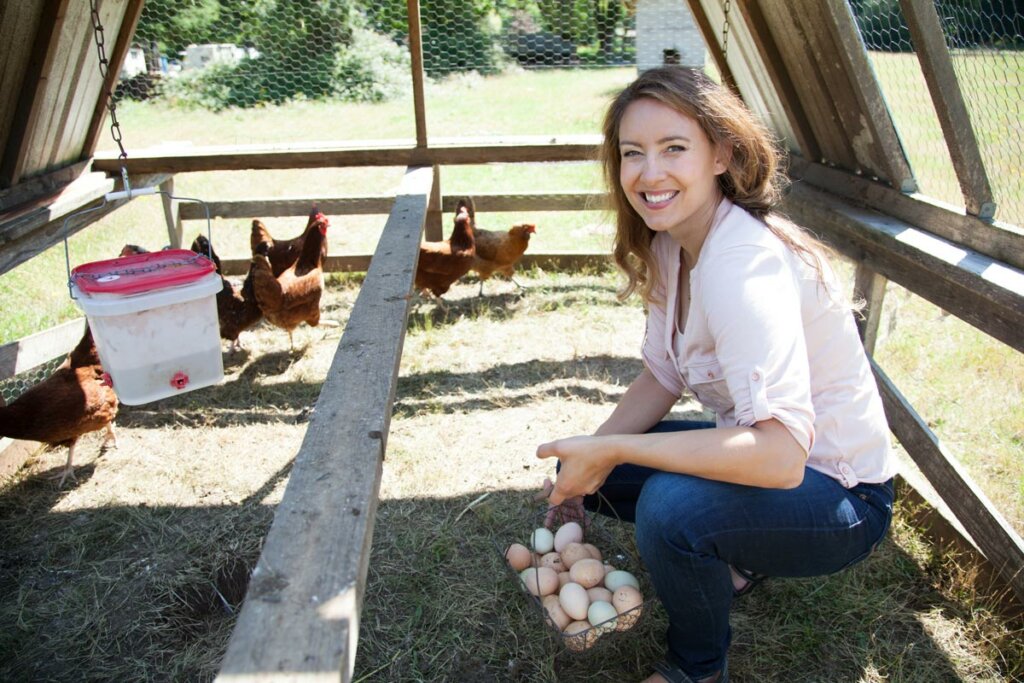
Best Egg Laying Breeds
There is much to consider when choosing a breed of egg-laying chickens. Some things to keep in mind when selecting your chickens are your climate, whether you’ll have children handling the chickens, and how many eggs per week you want to get. Here are a few breeds and some basic background information to get you started.
- Rhode Island Reds – These are a great all-around egg-laying chicken; they’re the most reliable egg-layers and will continue to lay sporadically throughout the winter. It’s up for debate, but, on average, you’ll get about 150-250 medium to large light-brown eggs per year (some say between 200-300 per year).
- Buff Orpington – This is a great dual-purpose hen (dual-purpose is a chicken you can raise for eggs and/or meat) that will lay approximately 150-300 light-brown eggs per year (or 3-6 eggs per week). These chickens are very sweet in nature and quite a bit more personable than other breeds.
- Wyandottes – Another great dual-purpose chicken is the Wyandottes. They’re so pretty with their black and white spotted feathers adding some pizazz to your flock. They tend to be great egg layers, and one chicken will lay about 200 eggs per year ranging in color from cream to brown (or 3-4 eggs per week).
- Speckled Sussex – This breed is a great layer and may continue to lay throughout the winter months. They’ll lay about 4-5 large, light brown eggs each week, a real producer of delicious eggs!
Those of us who live in a cold climate that reaches freezing temperatures and below are advised that chickens with darker feathers fare better and may continue to lay some eggs through the winter months. Dark breeds of chickens hold their body heat better due to the heat absorption in their feathers. Consider these darker breeds if you live in a colder climate.
- Ayam Cemani – This breed is dark in color and is a dual-purpose chicken. With this breed, you’ll only get about 80 eggs per year, so it’s not a great egg producer.
- Orpington – This breed is an excellent dual-purpose chicken with plenty of eggs and dark feathers for heat absorption.
- Australorp – This breed is an Australian hybrid of the Orpington, making it another option for a dual-purpose bird that’s a great egg layer (giving about 250+ eggs per year). There are other colors of Australorps, so if you’re specifically needing the black shade, make sure you’re buying from a reputable seller.
- Jersey Giant – This breed is another dual-purpose chicken that will be in the larger size (as you can tell by the name). You’ll get about 150-200 eggs per year from this breed, but it’s known to be able to withstand the cold temperatures due to its ample body fat.
Pro Tip – I’ve also read that when raising chickens in a colder climate choose breeds with smaller combs on the top of their heads. I’m not sure if this is due to frostbite or another reason, but it’s something to consider.
Dual Purpose Chickens
The list of egg-laying chickens above shows that many of the breeds mentioned are dual-purpose. This means they’re great egg-laying hens that will also grow to a decent size for butchering.
There are certainly some positives to raising dual-purpose hens, as you’ll get eggs and you can butcher them for meat after they’ve laid a year or two to feed your family.
It’s possible to raise some egg-layers and some dual-purpose chickens together in the same flock. You can integrate your dual-purpose birds and laying hens that you get as chicks. But you should wait until they are full size and fully feathered.
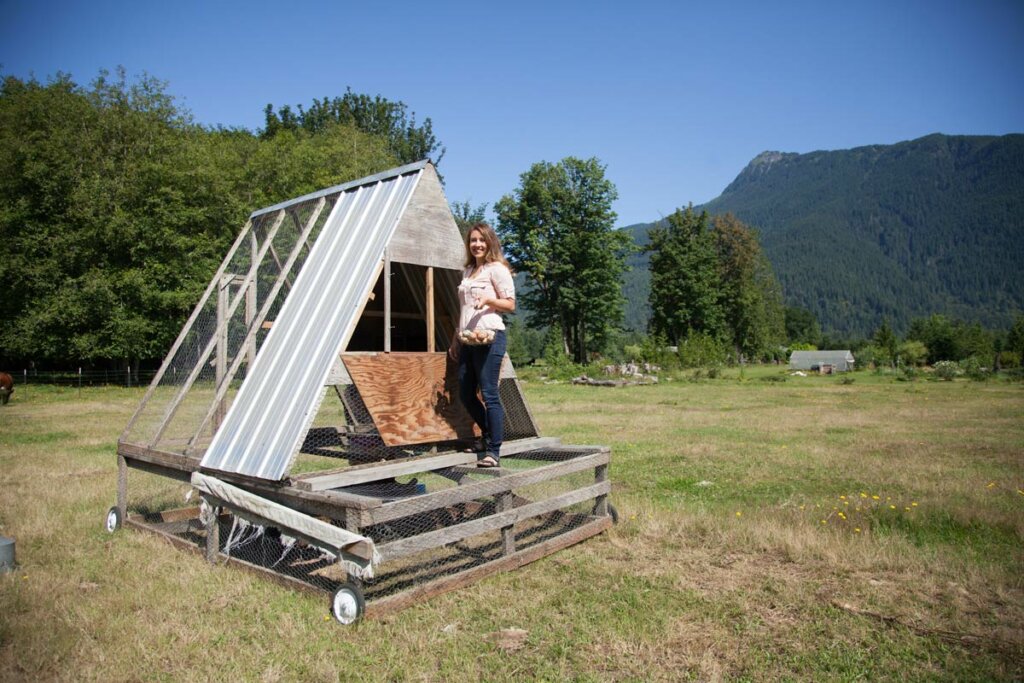
Free Range vs. Coop & Run
Chickens need a safe place to free range or an enclosed run and a coop to perch on and lay their eggs in. We free-range our chickens, meaning they wander about the homestead pecking at insects and scratching around the place freely. This works well for us but may not work for you.
Like most aspects of raising animals on a homestead, free-ranging chickens has its pros and cons. Predators can wipe out an entire flock, and that can be devastating. Chickens that free range can get into areas of your yard you don’t want them, like your garden.
If you’re allowing your chickens to free-range and they’ll have access to your garden, be extremely careful! Truthfully, my advice is to keep them OUT of the garden during the growing season and ONLY let them in once your harvest is over. Here are my tips on successfully using chickens in the garden.
We’ve lost a few adult chickens to predators over the years, but usually, the younger chicks or the smaller-size breeds (like Silkies) get snatched. Keep your coop close to home, use portable electric fence netting, and buy adult hens that have been free-ranging, and you’ll be a step ahead.
The coop and run system works well if you have an area that needs to be separate from the rest of the yard and garden. It also can be built in such a way as to protect your chickens from predators. Using electric fence netting and having a goose, dog, or giant rooster are all ways to protect your flock.
You will want to have their shelter figured out and set up before bringing them home. If you’re bringing home baby chicks, you’ll need a brooder, and I go into more detail about caring for baby chicks in this post.
However, if they’re older chickens, then you can decide if you want to do a dedicated chicken coop and run, keeping them in a chicken tractor or allowing them to free-range with access to something like a barn or a hen-house and some nesting boxes available.
Just know that you don’t need fancy or expensive chicken coops in order to keep backyard chickens. As long as their home protects them from predators, keeps them out of severe weather, has a place to lay their eggs, and allows them to stay hygienic, then you’re doing great.
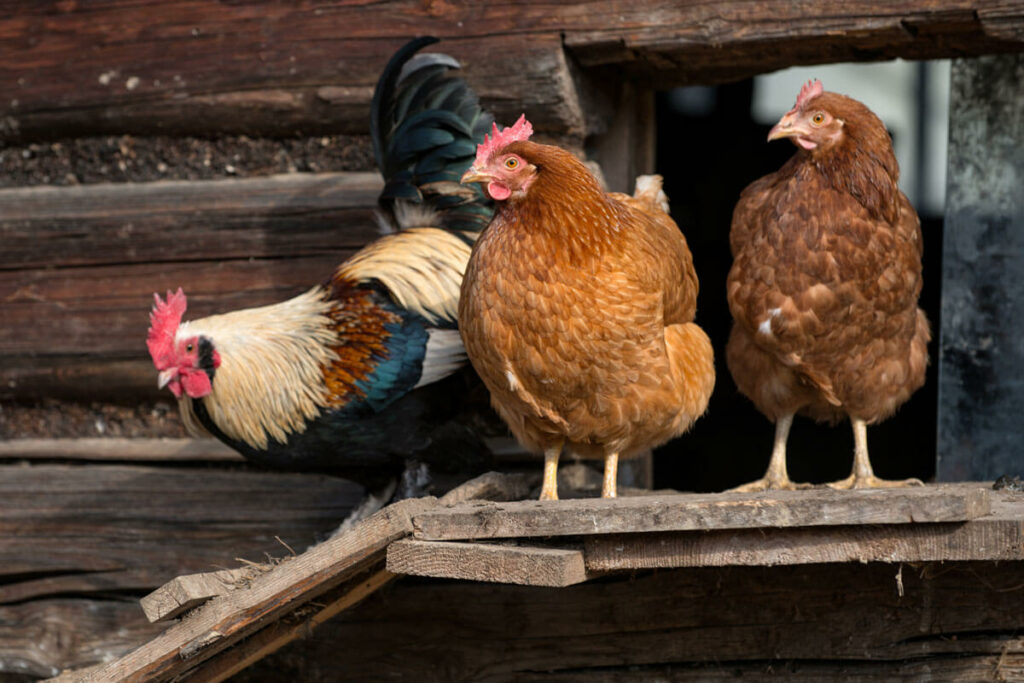
Shelter Considerations
Your chickens will need some form of shelter, but the good news is, they’re not picky!
You will want to have their shelter (coop) figured out and set up before bringing them home.
- Size Needs – Two to three square feet of room per adult hen is adequate. Depending on their size, they also need eight to twelve inches of perch space per bird. Just know if your coop isn’t large enough, some of your chickens may start pecking at each other, so it’s important they have enough space.
- Static or Mobile Coop – If chickens are only going into the coop at night or to lay their eggs, they don’t actually need as much space. Chickens are incredibly hearty and tend to be free-ranging or in an open coop in most weather.
- Coop Location – When locating your chicken coop, you need to keep in mind the smell, the climate, wind direction, and access to power and water. Chicken poop is quite smelly! Locating your coop down-wind is a smart option unless you want the occasional wafts of ammonia floating into your home. If you live in a suburban area, think about the same for your neighbors; they’ll appreciate the effort.
- Power and Water – Chickens require water, so consider how far you’ll need to be walking their water to their coop! You’ll need access to electricity if you need light or a heat lamp for your coop.
- Weather – In colder climates, be sure your coop isn’t located in a frost or a shadow line on your property where it will get extra cold in the winter. In warmer climates, you may want to seek out the shade of a large tree to keep the coop from overheating in the summer.
- Wind – It’s also important to know where your wind comes through in the winter and situate your coop on your property where it will get both the most sun and be the most protected from inclement weather. If there is no option for keeping your coop out of the wind, be sure to situate the door (where the chickens will go in and out of the coop) away from where the wind is coming from.
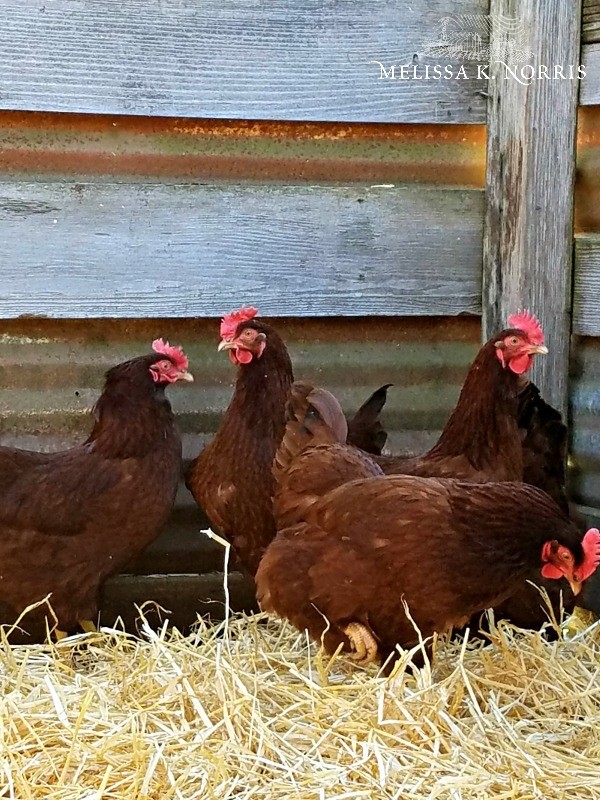
Protecting Chickens During the Winter
In the Pacific Northwest, our temperatures tend to dip below freezing into the twenties and teens in the winter months. We rarely have single-digit temps but we are prepared when we do to keep our chickens warm and cozy.
- Insulating Your Coop – I make sure my coop is all sealed up from any wind or cold that may seep in. We live in a wet, rainy area so bales of straw can get mold growth. I only place them around the outside to insulate the coop if I know the temperature is going to drop significantly.
- Bedding – I like to do a deep litter system where there are a few thick layers of straw (don’t use hay; it will mold and get really icky). Some people like a combination of wood shavings and straw, but be careful about the type of wood, as cedar can be irritating to the birds.
- Heat Lamps – Living where you’re battling consistent negative temperatures, using heat lamps to help warm the coop is helpful. Be careful because chickens are known to flutter into the air and flap around, so if they knock the heat lamp down or break the bulb, there is a chance of fire. There are some newer heating sources for coops that are said to be safer; I haven’t used these myself, so I can’t attest to them, but if I were in need of a heat source, these are what I’d look at first.
- Coop Placement – In colder climates, be sure your coop isn’t located in a frost or a shadow line on your property where it will get extra cold in the winter.
- Feed Your Chickens Before Bed – One way to help chickens stay warm in the winter months is to feed them some scratch or cracked corn before nightfall. The extra carbohydrates give them extra energy to keep them warm throughout the night.

When Will Chickens Start Laying Eggs
Your chickens should start laying eggs at about 4-6 months of age and continue to do so for an entire year. If you get your chicks in the spring, they’ll start laying in the fall and continue laying through that first winter. Although egg production can slow down quite a bit in the winter months and again after that first year in the fall when they molt.
How Many Eggs Can I Expect
When your backyard chickens are actively laying, you’ll get about one egg per day, or one egg every other day per bird (depending on the breed). There are certain breeds that will continue to lay throughout the fall and winter, even without artificial light, but it certainly won’t be at the same 1 egg per day; it’s more like 1 egg per week.
Using Artificial Light to Increase Egg Production
If you want to raise chickens that produce eggs year round, try the artificial light method.Using an artificial light makes your chickens think there is more daylight, so they don’t slow down (or only slightly slow down) their egg production during fall and winter.
If you’re not going to use lights, then you’ll want enough chickens to be laying eggs throughout the spring and summer to allow you to preserve those eggs to use in the off-months so you don’t have to go back to buying eggs from the grocery store (yuck!).
Our hens will continue laying about one egg per day all the way through late summer when the daylight starts to get shorter, then some of our chickens will slow down and give us about 1 egg every other week.
Check out how we freeze dry or alternately freeze our extra eggs in the summer to use throughout the winter.
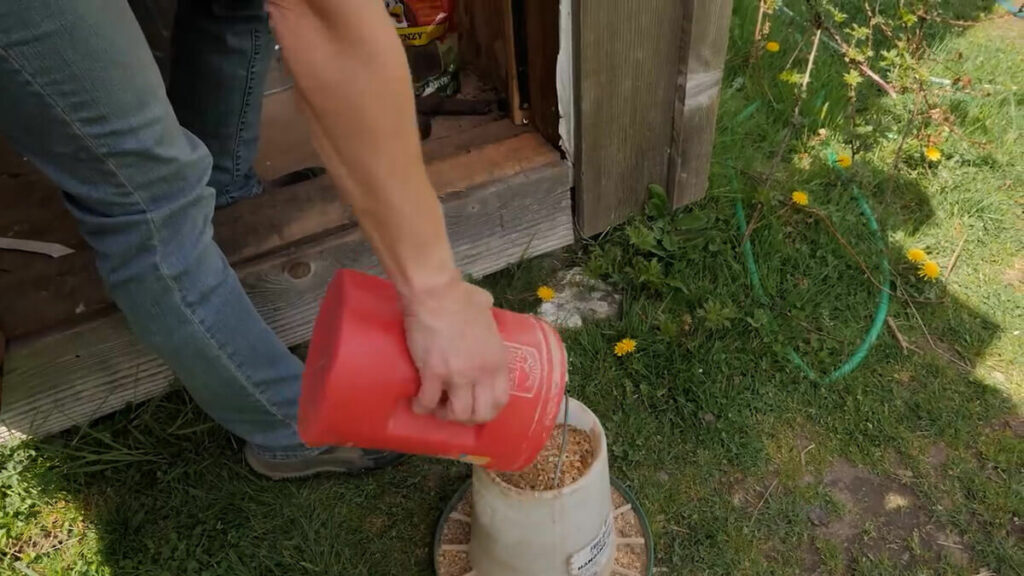
Feeding Backyard Chickens
What to Feed Chickens
The ideal setup is to have your chickens able to free-range for grass, vegetation, bugs and worms. This can either be by truly allowing your chickens to free-range or by using a chicken tractor, which is a protected, moveable enclosure that still gives them access to fresh grass and other livestock feed you can grow.
A chicken tractor is what we use for our chickens, and they have access to pasture most months of the year unless it’s an unusually snowy winter. I also supplement their diet and stock up on store-bought and animal feed, keeping costs down when it’s on sale.
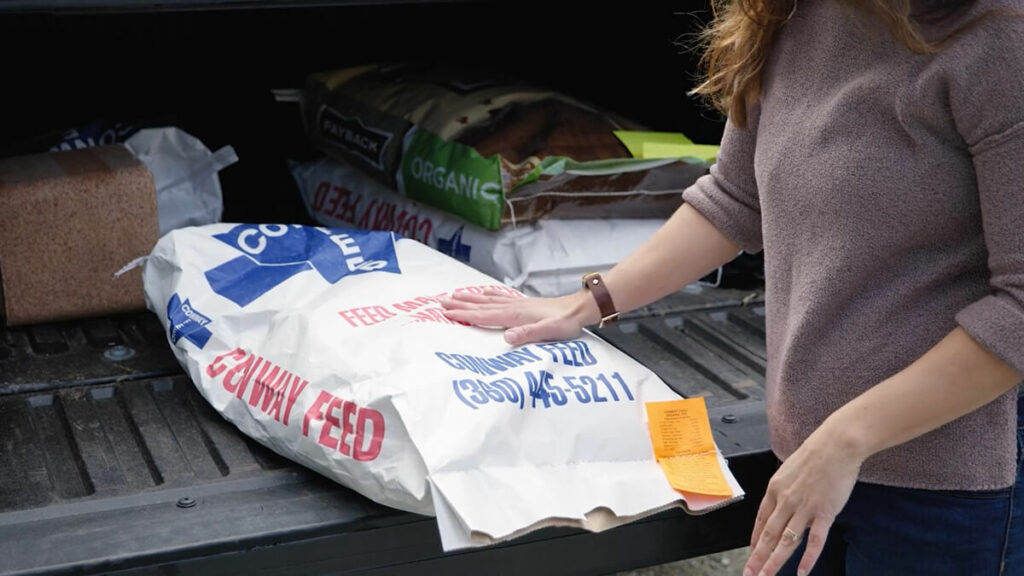
Type of Feed
I like to feed my chickens certified organic feed because I don’t want them eating anything GMO or sprayed with pesticides. Good nutritious food and water keep those chickens healthy and happy!
My chickens also get plenty of kitchen scraps and are very good eaters! They especially love my extra SCOBYs from brewing kombucha.
There are a few things you should NOT feed your chickens.
- Avocados – Persin is a compound that is toxic to chickens and is found in avocados.
- Green Potato Skins – The toxin Solanine in present in green potato skins is harmful to chickens (these aren’t great for humans either!)
- Dry beans – The compound phytohaemagglutinin (that’s a mouth full) is found in dry beans and lentils and is poisonous to chickens. Cooked or sprouted beans kill the compound and make it safe to feed them.
- Citrus fruit – The high acidity of citrus fruits can upset their digestion and slow egg production.
- Chocolate – Theobromine and caffeine, both present in chocolate, are toxic to chickens.
- Moldy or Spoiled Food – It’s unhealthy for us to eat, so why give it to your chickens when you eat their eggs?
- Junk food or Highly Processed Foods – GMOs are often times a part of the processed food diet. I won’t eat it, so I won’t feed it to my chickens whose eggs I consume.
How Much to Feed Chickens
You want to make sure your chickens are being fed the proper ratios of nutrients. A feed that has 16-18% protein for egg-laying chickens is ideal, and you should be able to find these at a granary or local feed store.
If your chickens don’t have access to free-range, a good rule of thumb is to feed them 1/4-1/3 lb of feed per chicken per day. You can scale this amount back if they are free-ranging (or in a portable chicken tractor).
Again, if you’re going to free-range your chickens and they have adequate access to vegetation with plenty of bugs and worms, then you can get away with feeding them less protein.
How much you feed your chickens will vary based on their age and whether or not they have access to peck and scratch for bugs and vegetation. If you’re watching carefully, your chickens will tell you how much food they need.
If there’s any feed left over on the ground a few hours after feeding them, reduce the amount you’re giving them. Or, if they’re eating it up quickly and still looking rather hungry, try increasing their feed until there’s just a little leftover, then scale back slightly.
Keep an eye on your eggs; if the yolks start to turn less vibrant orange or a pale yellow, your chickens are lacking nutrients. Also, if the shells become brittle, they’re not getting enough nutrients.
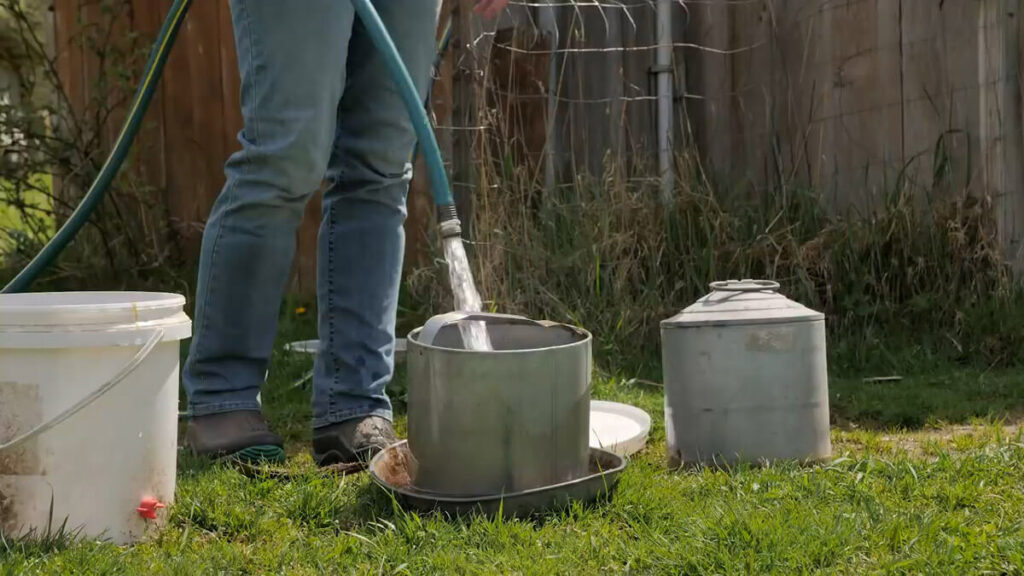
Watering Systems
Your chickens are going to need access to clean water at all times. Let me just say if your chickens can poop in their water, they will! This is why I like to use a hanging watering system with chicken nipples, so there’s no way they can make a mess of their water.
I use a large 3.5-gallon waterer, so I don’t have to fill it daily. Since our temperatures don’t dip too low in the winter, I usually don’t have issues with freezing water, and the water also doesn’t get too hot in the summer months.
Tips for Success
Providing egg layers with adequate space, good-quality food, fresh water, and a clean environment is a great way to make sure your chickens stay healthy.
Quarantine New Chickens
When integrating new hens into your flock, unless you know the hen, where it came from and that it’s free of diseases that could potentially spread to the rest of your flock, you’ll need to quarantine that bird before bringing it into your flock to ensure there are no diseases.
Maintain Proper Coop Size
If you’re not sure about the size of your coop and think things may seem a bit cramped, keep an eye on your chickens, watching for signs of stress. If chickens get stressed, they may start to peck at each other. I have had this happen to one of my chickens before, even though my coop size was within the recommended space.

Watch for “Bullies”
Once the chickens start pecking at another one and draw blood or create a red mark, they’ll actually continue to peck at this chicken and eventually kill it (chickens are drawn to red).
If this happens, you’ll either need to find the chicken in the flock that’s doing the pecking and remove it from the coop until the wound on the injured chicken is healed (as long as no other chickens continue to peck at it).
Overall Health
Keep an eye on how your chickens move and walk when they’re healthy, so you’ll recognize any changes if something is wrong.
Watch for weepy discharge from their eyes, any chickens limping or not moving around much, etc. The more you interact with your chickens on a daily basis the easier it will be to notice something when it’s off.
Since chickens will eat just about anything you give them, I’ll sometimes add some ACV to their water if my chickens ever look listless or lethargic. I’ll also feed them some fresh thyme or oregano to boost their immune system throughout the summer. For further information on chicken health, read about these common poultry diseases.
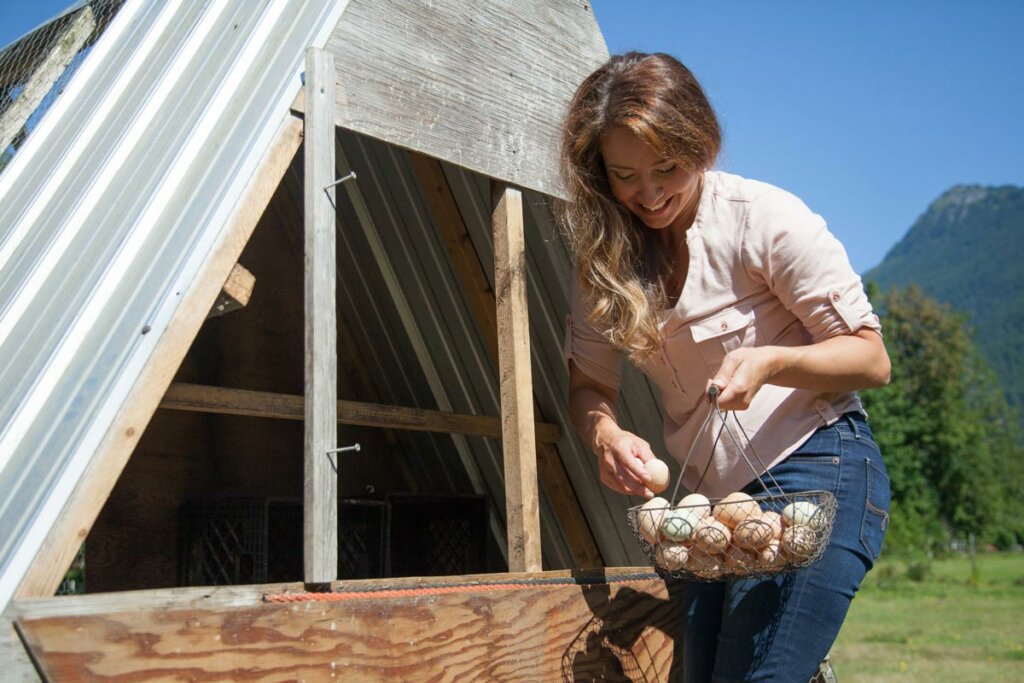
Bringing Chickens Out of Egg Droughts
Chickens’ egg production naturally drops when they go through molting or a long winter with reduced daylight hours. They’ll just start laying automatically once the days start getting longer.
Just recently, the days are starting to get longer, and now I have a second hen that has started laying. Not every day, but maybe every third day, she’s popping an egg out. Just keep feeding them layer feed and give them fresh air, water and exercise. It’s exciting when the days get longer, and they start laying again.
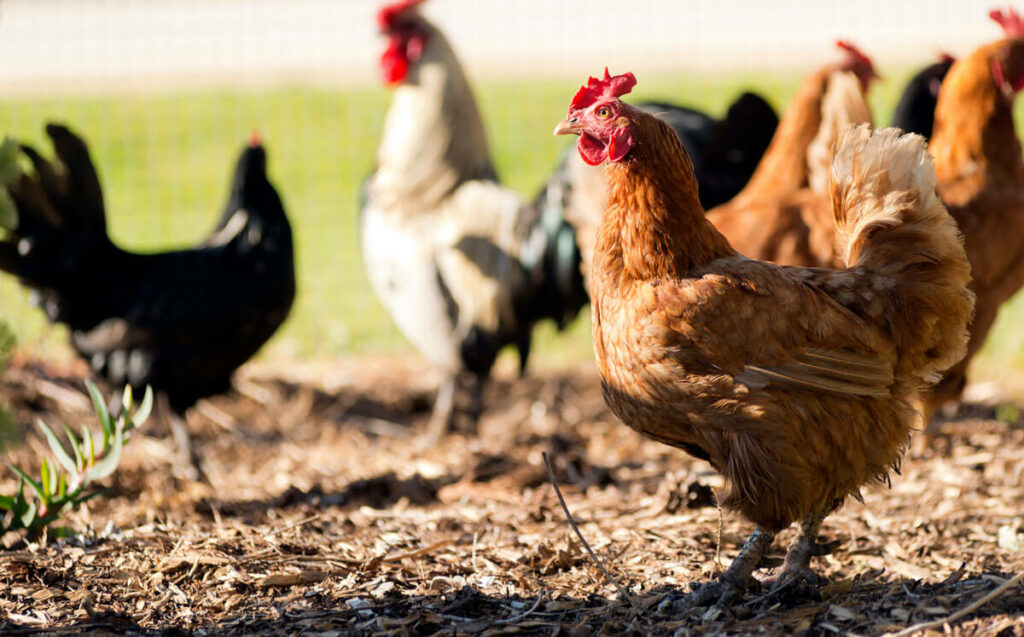
Resources
Episode #310
- Where to Find Lisa:
- Made From Scratch Life
Episode #297
- Pioneering Today Academy Waitlist
- Verse of the Week – Jude 24

Other Posts You May Enjoy
- Raising Meat Chickens
- Storing & Preserving Eggs
- Our Livestock Production Plan
- Breeding Chickens Naturally
- Raising Baby Bhicks for the First Six Weeks
- Integrating New Chickens Into an Existing Flock
- Using Chickens in the Garden
- Portable Electric Fence Netting
[fusebox_transcript]
